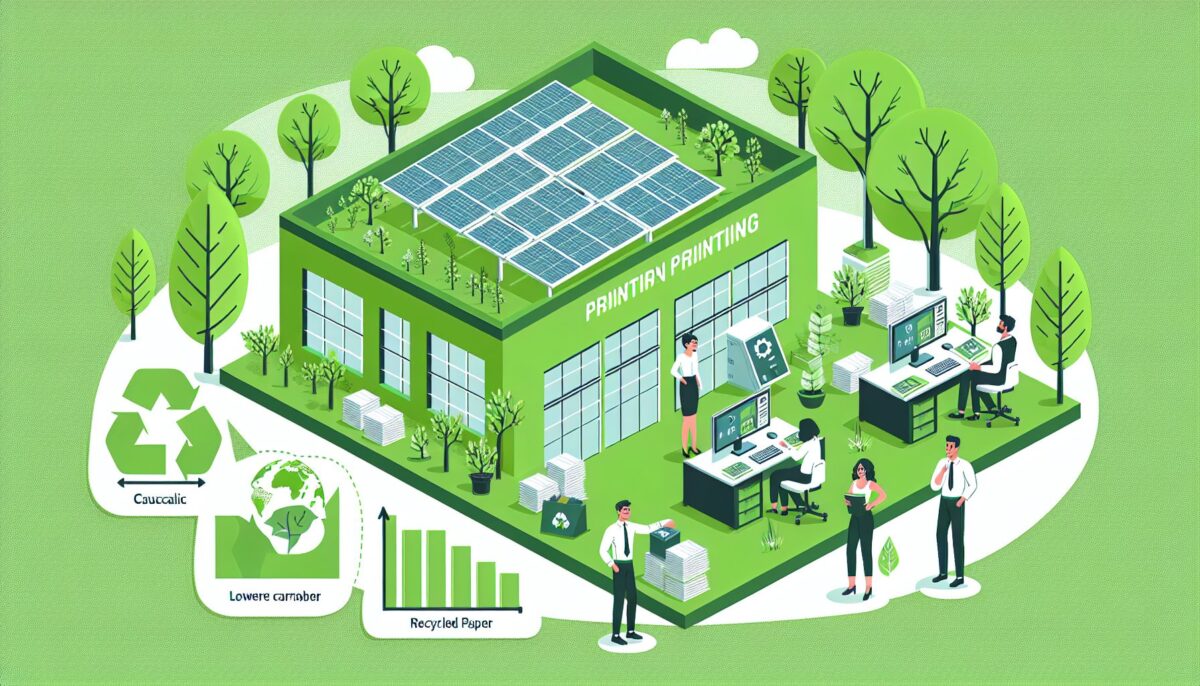In today’s world, where environmental concerns are at the forefront of everyone’s minds, it has become increasingly important for businesses to adopt sustainable practices in all areas of their operations. One industry where sustainability is particularly crucial is printing. With the widespread use of paper products and the energy-intensive processes involved in printing, the environmental impact of the printing industry can be significant. However, by making a commitment to sustainability, printers can reduce their environmental footprint and contribute to a healthier planet.
The Environmental Impact of Printing
The printing industry has long been associated with negative environmental impacts, primarily due to the high levels of energy consumption and waste generation involved in the printing process. Printing presses require a significant amount of electricity to operate, and the production of paper and ink also has a substantial carbon footprint. In addition, the disposal of printing waste, such as paper scraps and used ink cartridges, can contribute to pollution and landfill accumulation.
Furthermore, the printing industry is a major consumer of water, with large quantities of water needed for paper production, printing processes, and equipment cleaning. Water contamination from chemical runoff and wastewater discharges is a common concern associated with printing operations, further highlighting the need for sustainable practices in the industry.
Sustainable Printing Practices
Thankfully, there are a variety of sustainable practices that printers can adopt to minimize their environmental impact. One of the most effective ways to reduce the environmental footprint of printing is by using recycled materials. Recycled paper, for example, requires less energy and water to produce than virgin paper, and it helps to decrease the demand for new trees to be cut down. Printers can also opt for eco-friendly inks, such as vegetable-based inks, which are less harmful to the environment than traditional petroleum-based inks.
In addition to using recycled materials, printers can also implement energy-efficient practices to reduce their electricity consumption. Investing in energy-efficient equipment, such as printers and presses, can help to lower energy bills and decrease greenhouse gas emissions. Printers can also reduce their water usage by implementing water-saving measures, such as recycling and reusing water in their operations.
Another key aspect of sustainability in printing is waste management. Printers can minimize waste by printing on-demand and using digital printing technology, which reduces the need for large print runs and excess inventory. Recycling paper scraps, ink cartridges, and other printing waste is also essential for reducing landfill accumulation and promoting a circular economy.
Benefits of Sustainable Printing
Embracing sustainability in printing not only benefits the environment but also offers a number of business advantages. Consumers are increasingly seeking out eco-friendly products and services, and businesses that demonstrate a commitment to sustainability can attract a larger customer base and build a positive brand reputation. By implementing sustainable practices, printers can also reduce their operating costs, improve efficiency, and comply with environmental regulations.
Furthermore, sustainable printing practices can lead to innovation and creativity in the industry. Printers that prioritize sustainability are more likely to adopt new technologies and processes that minimize environmental impact and enhance the quality of their products. By staying ahead of the curve in terms of sustainability, printers can differentiate themselves in the marketplace and remain competitive in a rapidly changing industry.
Conclusion
In conclusion, sustainability is a critical issue in the printing industry, and printers of all sizes can make a positive impact by embracing sustainable practices. By using recycled materials, implementing energy-efficient measures, managing waste responsibly, and prioritizing sustainability in all aspects of their operations, printers can reduce their environmental footprint and contribute to a greener future. With the growing demand for eco-friendly products and services, sustainable printing practices are not only environmentally responsible but also economically beneficial. By making a commitment to sustainability, printers can help to create a more sustainable world for future generations.

